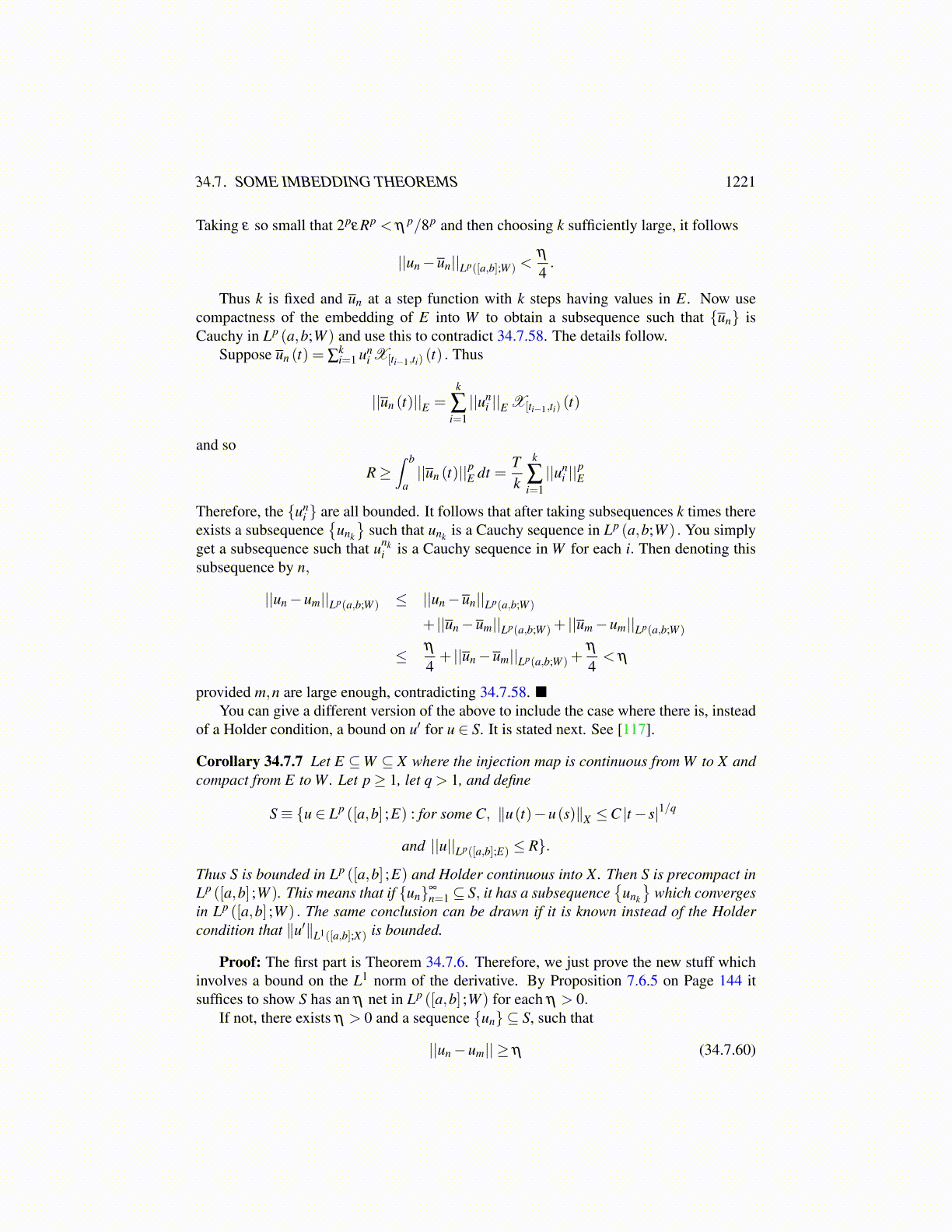
34.7. SOME IMBEDDING THEOREMS 1221
Taking ε so small that 2pεRp < η p/8p and then choosing k sufficiently large, it follows
||un−un||Lp([a,b];W ) <η
4.
Thus k is fixed and un at a step function with k steps having values in E. Now usecompactness of the embedding of E into W to obtain a subsequence such that {un} isCauchy in Lp (a,b;W ) and use this to contradict 34.7.58. The details follow.
Suppose un (t) = ∑ki=1 un
i X[ti−1,ti) (t) . Thus
||un (t)||E =k
∑i=1||un
i ||E X[ti−1,ti) (t)
and so
R≥∫ b
a||un (t)||pE dt =
Tk
k
∑i=1||un
i ||pE
Therefore, the {uni } are all bounded. It follows that after taking subsequences k times there
exists a subsequence{
unk
}such that unk is a Cauchy sequence in Lp (a,b;W ) . You simply
get a subsequence such that unki is a Cauchy sequence in W for each i. Then denoting this
subsequence by n,
||un−um||Lp(a,b;W ) ≤ ||un−un||Lp(a,b;W )
+ ||un−um||Lp(a,b;W )+ ||um−um||Lp(a,b;W )
≤ η
4+ ||un−um||Lp(a,b;W )+
η
4< η
provided m,n are large enough, contradicting 34.7.58.You can give a different version of the above to include the case where there is, instead
of a Holder condition, a bound on u′ for u ∈ S. It is stated next. See [117].
Corollary 34.7.7 Let E ⊆W ⊆ X where the injection map is continuous from W to X andcompact from E to W. Let p≥ 1, let q > 1, and define
S≡ {u ∈ Lp ([a,b] ;E) : for some C, ∥u(t)−u(s)∥X ≤C |t− s|1/q
and ||u||Lp([a,b];E) ≤ R}.
Thus S is bounded in Lp ([a,b] ;E) and Holder continuous into X. Then S is precompact inLp ([a,b] ;W ). This means that if {un}∞
n=1 ⊆ S, it has a subsequence{
unk
}which converges
in Lp ([a,b] ;W ) . The same conclusion can be drawn if it is known instead of the Holdercondition that ∥u′∥L1([a,b];X) is bounded.
Proof: The first part is Theorem 34.7.6. Therefore, we just prove the new stuff whichinvolves a bound on the L1 norm of the derivative. By Proposition 7.6.5 on Page 144 itsuffices to show S has an η net in Lp ([a,b] ;W ) for each η > 0.
If not, there exists η > 0 and a sequence {un} ⊆ S, such that
||un−um|| ≥ η (34.7.60)